Table of Contents |
guest 2025-12-17 |
Event Information
Speakers
Michel Batista
Tanveer Batth
Emma Doud
Michael MacCoss
Brendan MacLean
Dragana Noe
Mike Riffle
Lauren Royer
Amie M. Solosky
Will Thompson
Fengchao Yu
Yiying Zhu
Thanks!
Thanks to everyone who joined us in Anaheim for the Skyline User Group Meeting before ASMS 2024. It was great to meet with all of you passionate Skyline users and share the opportunity to experience varied presentations about recent work enabled by (and for) Skyline software!
Below are links to the speakers' pages with options to view their slides or watch their presentations. At the bottom of this page, you will also find some photos from the event.
Thanks especially to all the wonderful speakers who volunteered their time and effort to share great presentations ranging from Skyline workflow tools to disease detection and prevention, and much more!
We hope these presentations long outlast the event itself, as previous years have.
Thank you! -- Brendan MacLean and Mike MacCoss, Event hosts
Michael J. MacCoss, Ph.D. (University of Washington): Introduction and event host
Brendan MacLean (MacCoss Lab, University of Washington): Status of the Skyline open-source software project 16 years after its inception [video]
The Skyline project started just after ASMS 2008 as a 2-year effort to bring better SRM/MRM software tools to the NCI-CPTAC Verification Working Group that could support the variety of mass spectrometers in use in participating laboratories. Nearly 16 years later, the Skyline project is a thriving proteomics community open-source collaboration supporting 6 mass spec instrument vendors, integrated with a wide variety of external software, with thousands of users worldwide and many thousands of instances started each week. (More info...)
Emma Doud (Indiana University School of Medicine): Fit for purpose high-throughput absolute quantitation of chimeric aducanumab in mouse cortex and plasma [video]
Although pharmacokinetics and pharmacodynamics of biotherapeutics are commonly studied through ELISAs, the extremely strong binding of modern antibody-based therapeutics can result in background, inability of secondary antibody binding, and nonlinear response curves. The selectivity and specificity of liquid chromatography-targeted mass spectrometry (LC-MS/MS) allows for absolute quantitation of chosen peptides. The Model Organism Development and Evaluation for Late-onset Alzheimer’s Disease (MODEL-AD) Consortium was established to generate, characterize, and validate the next generation of mouse models of AD and to develop a preclinical testing pipeline. As a template workflow for MODEL-AD, we have developed a high-throughput workflow for absolute quantification of chimeric aducanumab from cortex and plasma of 5XFAD mice. (More info...)
Amie M. Solosky (Baker Lab, University of North Carolina at Chapel Hill): Developing and Applying a Multidimensional Lipid Database Containing Liquid Chromatography, Ion Mobility Spectrometry, and Mass Spectrometry Separation Characteristics in Skyline [video]
Lipids are critical for biological function in the body as they are responsible for cell membrane structure, cell signaling, lipid biosynthesis, and energy storage. Additionally, lipid dysregulation has been observed in disorders such as cancer, Alzheimer’s disease, and diabetes and has been closely linked to different environmental exposures. These functional and disease associations have motivated researchers to evaluate lipidomic changes in numerous matrices. (More info...)
Mike Riffle (Dept. of BioChem, University of Washington): From RAW to Skyline: an automated DIA data analysis workflow written in Nextflow that emphasizes ease of use, data reproducibility, and open science [video]
An automated computational workflow can solve many problems in data analysis. It dramatically simplifies installing and running the constituent steps, manages versions, reduces user errors, provides data provenance, and is essential for data reproducibility.(More info...)
Will Thompson Ph.D, (908 Devices): Enhancing Skyline for MicroChip CE-HRMS Metabolomics with a Novel Software Pipeline Including Automated System Suitability Testing, Data QC, and Metabolite Peak Quantification [video]
Metabolomics has demonstrated the ability to measure hundreds of metabolites in diverse sample types. Nonetheless, data analysis remains a key bottleneck in targeted and nontargeted approaches. For example, although system suitability testing (SST) has been widely adopted as common practice in metabolomics, human intervention is often required to accept or reject system suitability, without strict go/no go criteria.(More info...)
Fengchao Yu Ph.D, (Alexey Nesvizhskii group, University of Michigan): Integration of Skyline into FragPipe for Streamlined Visualization [video]
Data visualization is an essential process in proteomics for assessing the quality of data and interpreting results. Skyline is a leader in this area, particularly for targeted and DIA methods. Here we present integration of Skyline with FragPipe, a comprehensive DDA and DIA proteomics data analysis pipeline, for visualizing and assessing FragPipe results.(More info...)
Lightning Talks
Michel Batista Ph.D., (Fiocruz-Brazil): A method based on LC-MS/MS that targets specific peptides of sepsis-causing microorganisms. [video]We described an assay to detect S. aureus, P. aeruginosa, and C. albicans directly from whole-blood samples as a diagnostic alternative for bloodstream infection. This method combines differential basic pH and acidic cell lysis, fast protein digestion, LC/ESI-MS/MS, and data analysis on Skyline. (More info...)
Tanveer Batth Ph.D., (Novo Nordisk Foundation Center for Protein Research): Identification of a fungal N-terminal histidine methyltransferase using targeted proteomics [video]
The fungal kingdom is a source of diverse set of novel enzymes capable of performing various biochemical reactions. Consequently, fungal enzymes have been crucial biocatalysts for industrial and research purposes. However, fungal post-translational modifications have not been extensively explored. (More info...)
Dragana Noe Ph.D., (Precision Biomarker Lab, Cedars-Sinai Medical Center): Comparative Analysis of Skyline and SmartPeak Performance in Quantifying a 60-Biomarker Panel in Plasma from Inflammatory Bowel Disease Patients [video]
Accurate data analysis is pivotal in clinical proteomics for the precise quantification of plasma biomarkers, crucial in both disease detection and monitoring. The majority of targeted proteomics research relies on open-source software, such as Skyline and SmartPeak. (More info...)
Lauren Royer (MOBILion Systems): Leveraging CCS and Mobility Aligned Fragmentation for Ion Mobility Enhanced Analysis of Lipids [video]
Lipidomics analysis often requires MS/MS analysis for confident identification, but fragmentation alone is often insufficient for differentiating various isomeric species. This is especially true when chromatographic separation is lacking. Skyline’s ion mobility filtering workflow provides an excellent tool to detect and monitor high resolution ion mobility (HRIM) separated lipid isomers by extracting fragmentation spectra based on the lipid’s measured collision cross section (CCS). (More info...)
Yiying Zhu Ph.D., (Tsinghua University): In-silico methods for distinguishing the glycan structural isomers by the isotope substitution [video]
Analysis of glycopeptides using LC-MS/MS is a challenging task mainly due to the complexity of glycans. Recent developments in searching algorithms have made it possible to identify glycopeptides on a large scale. The pGlyco software can determine the glycan structure isomers by their differential fragmentation in MS/MS spectra. (More info...)
Sponsors
 |
|
 |
 |
 |
 |
 |
|
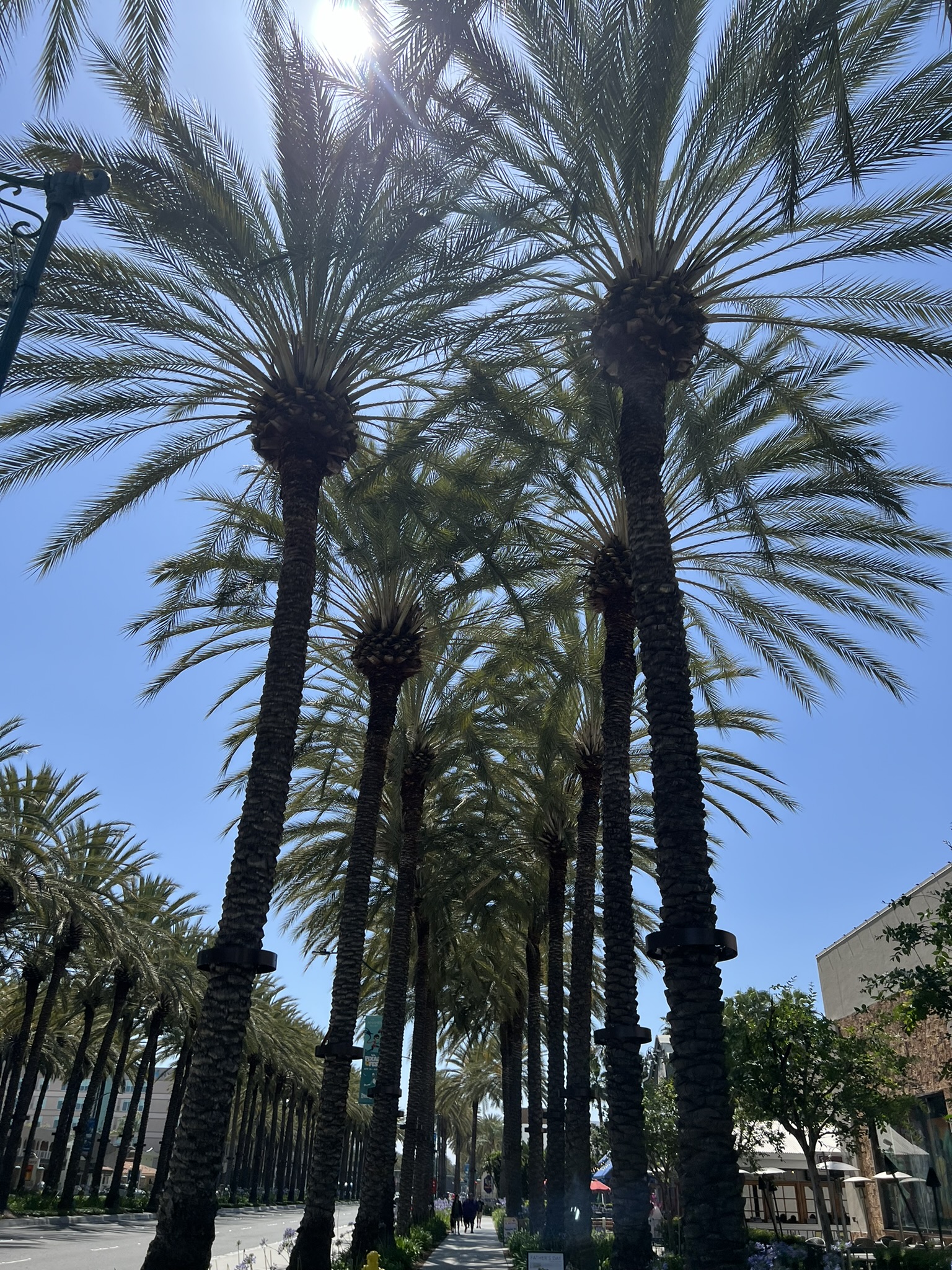 |
 |
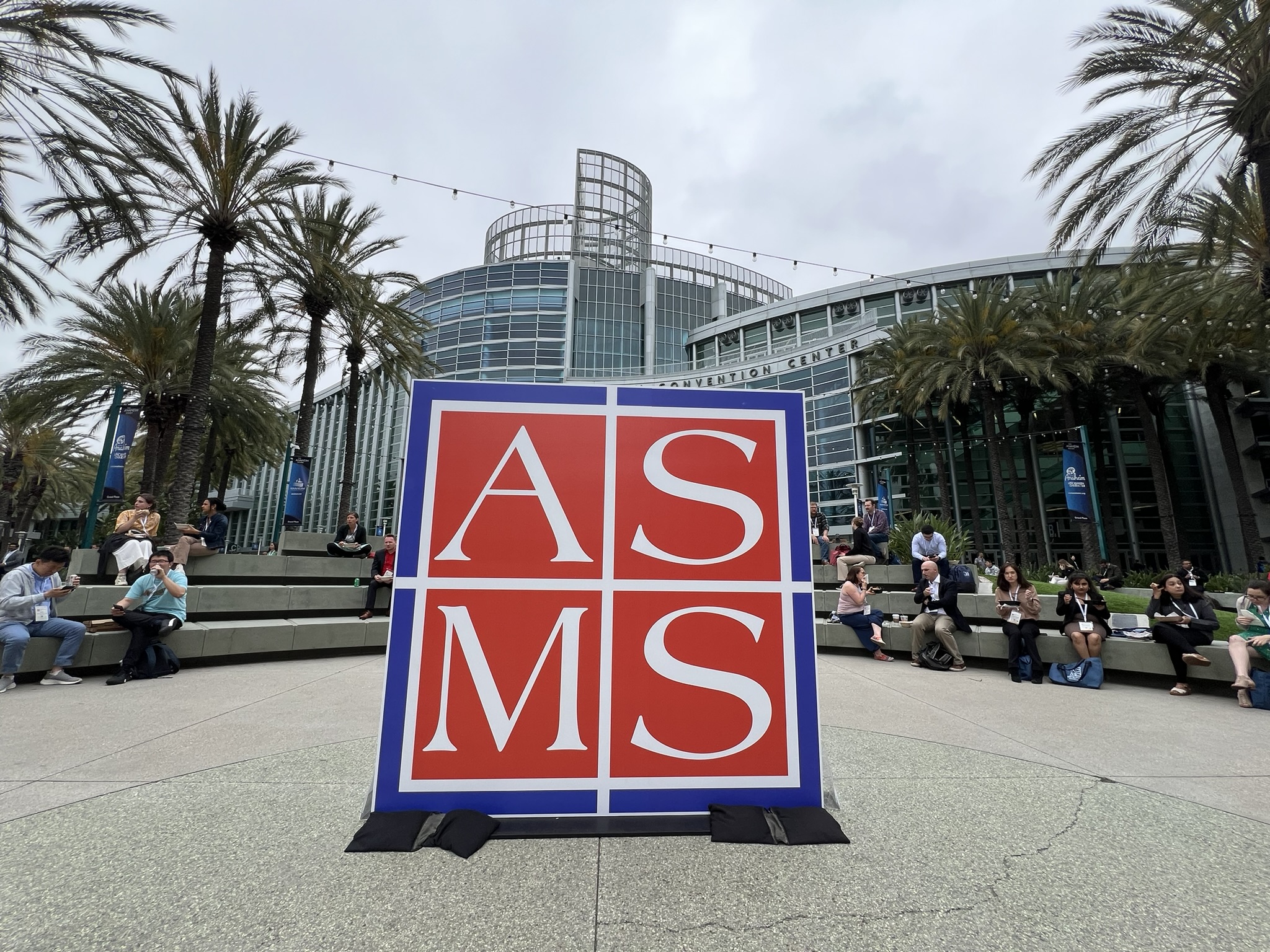 |
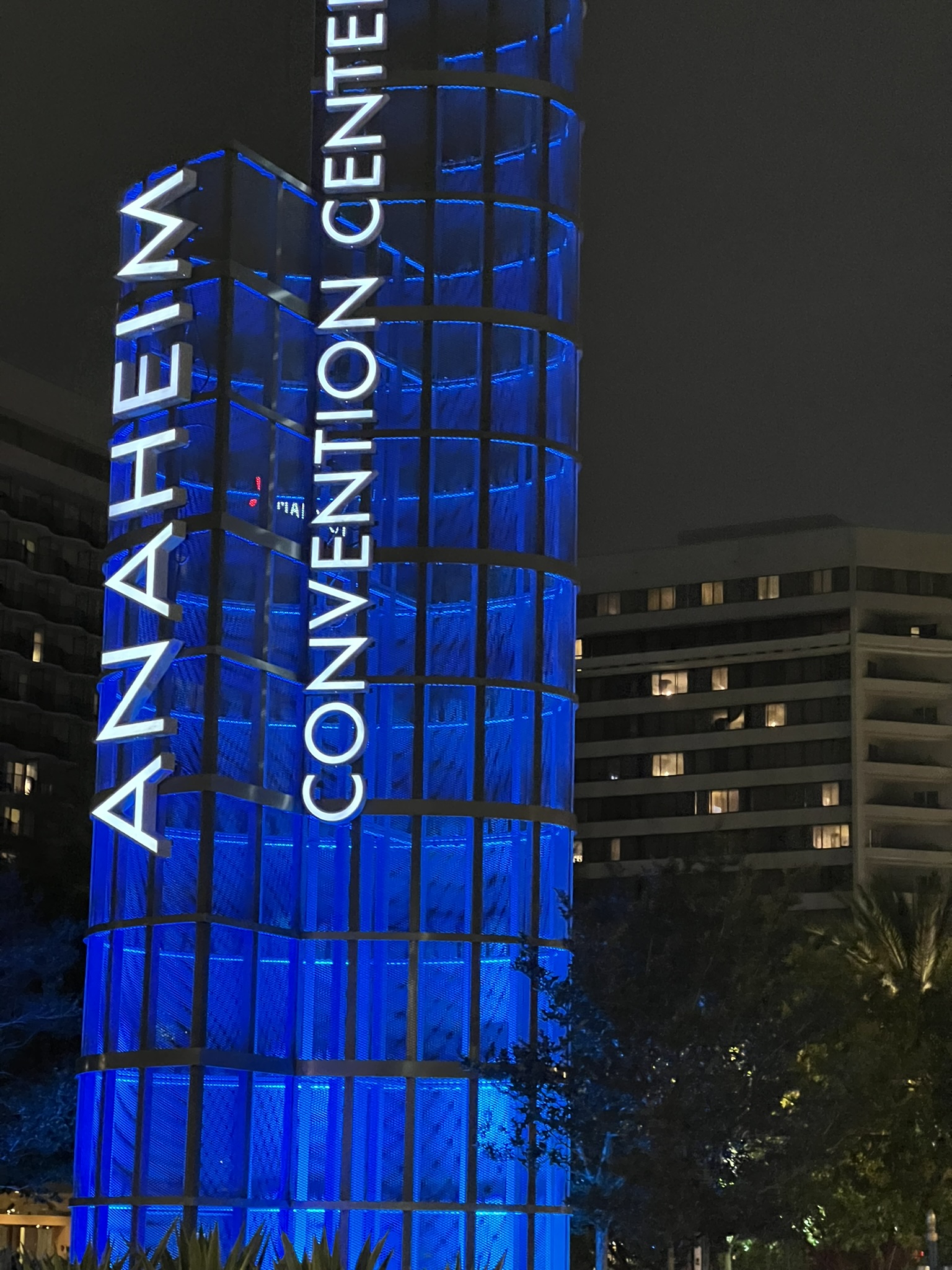 |
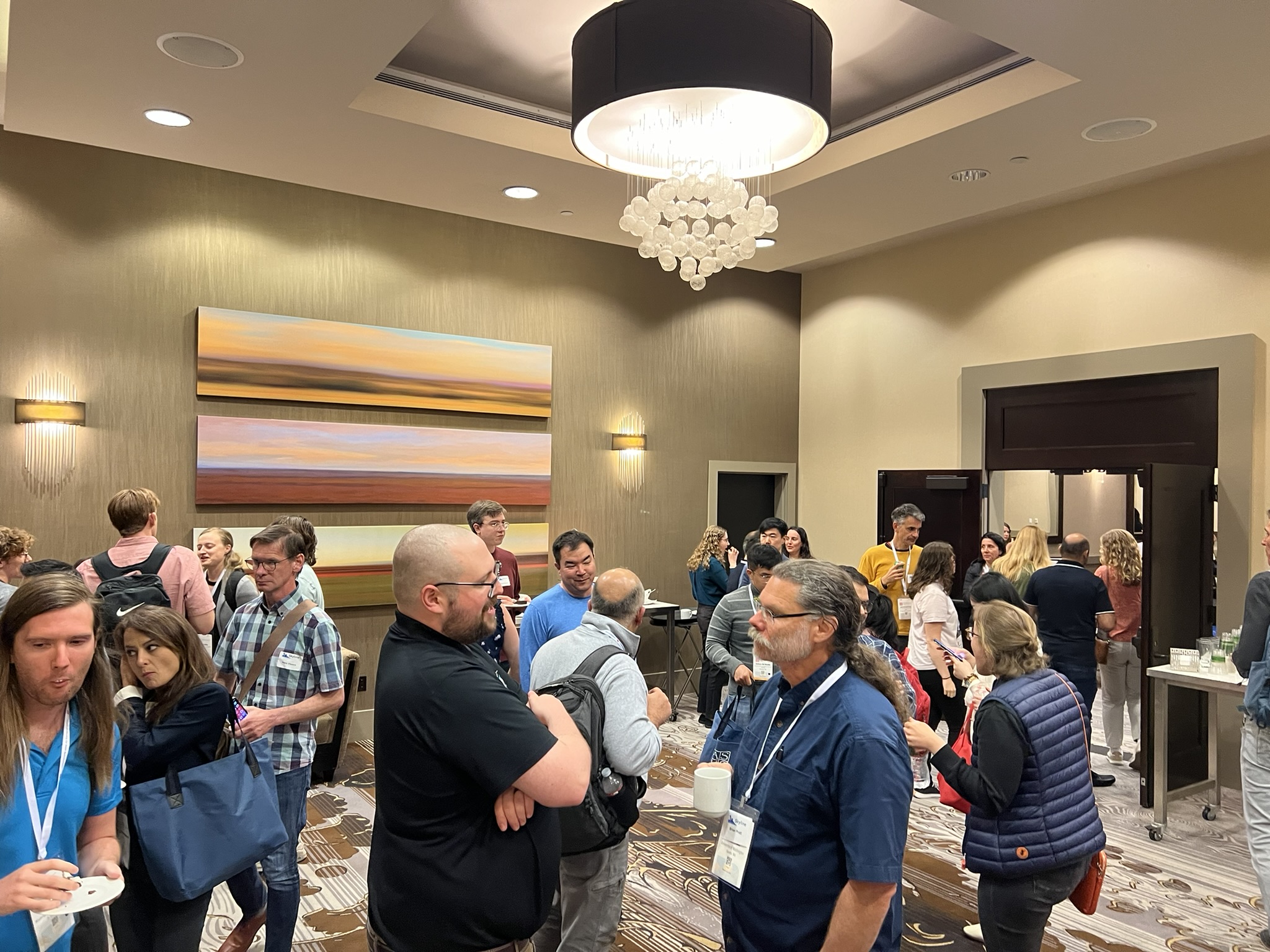 |
|
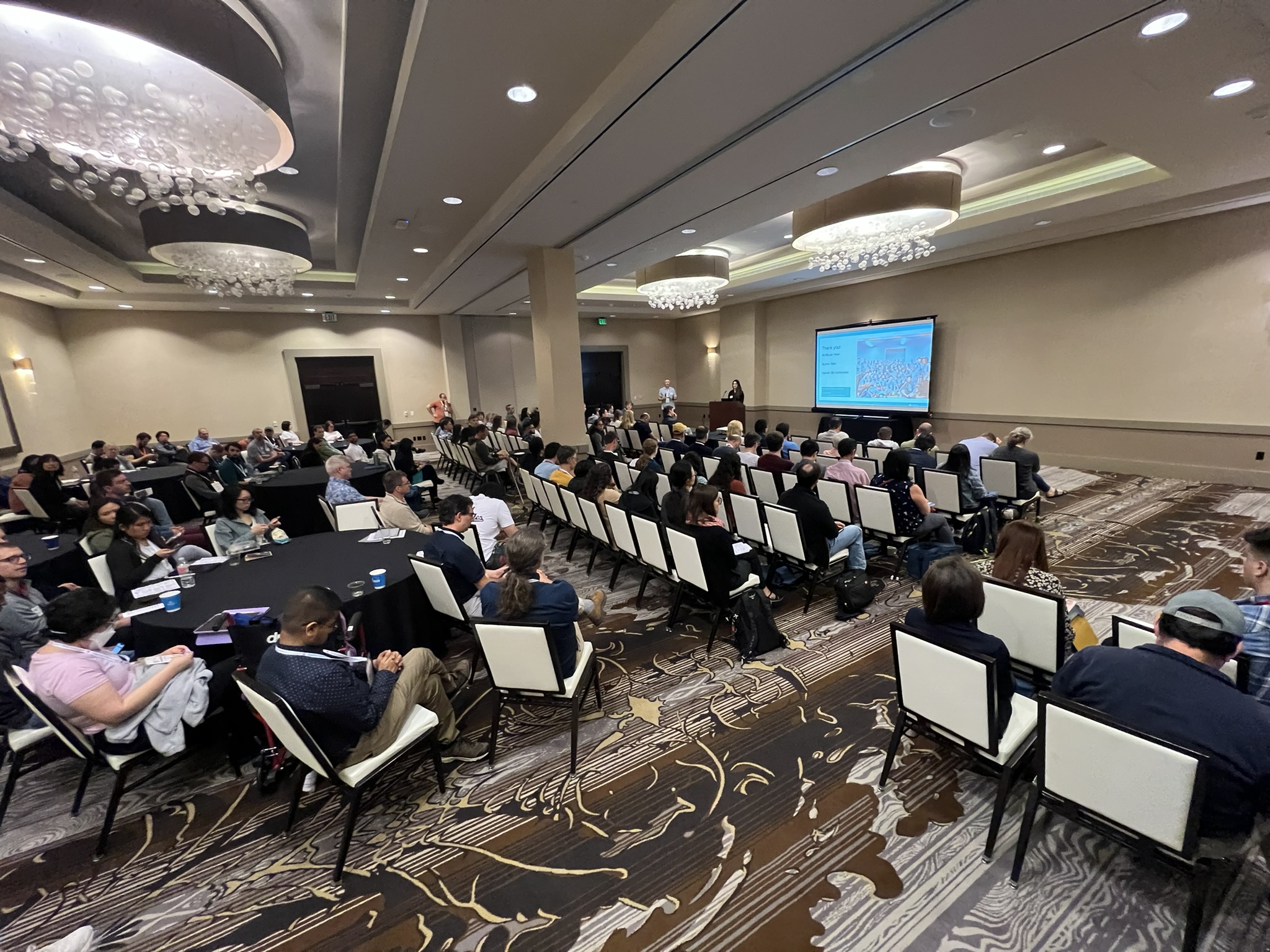 |
|
 |
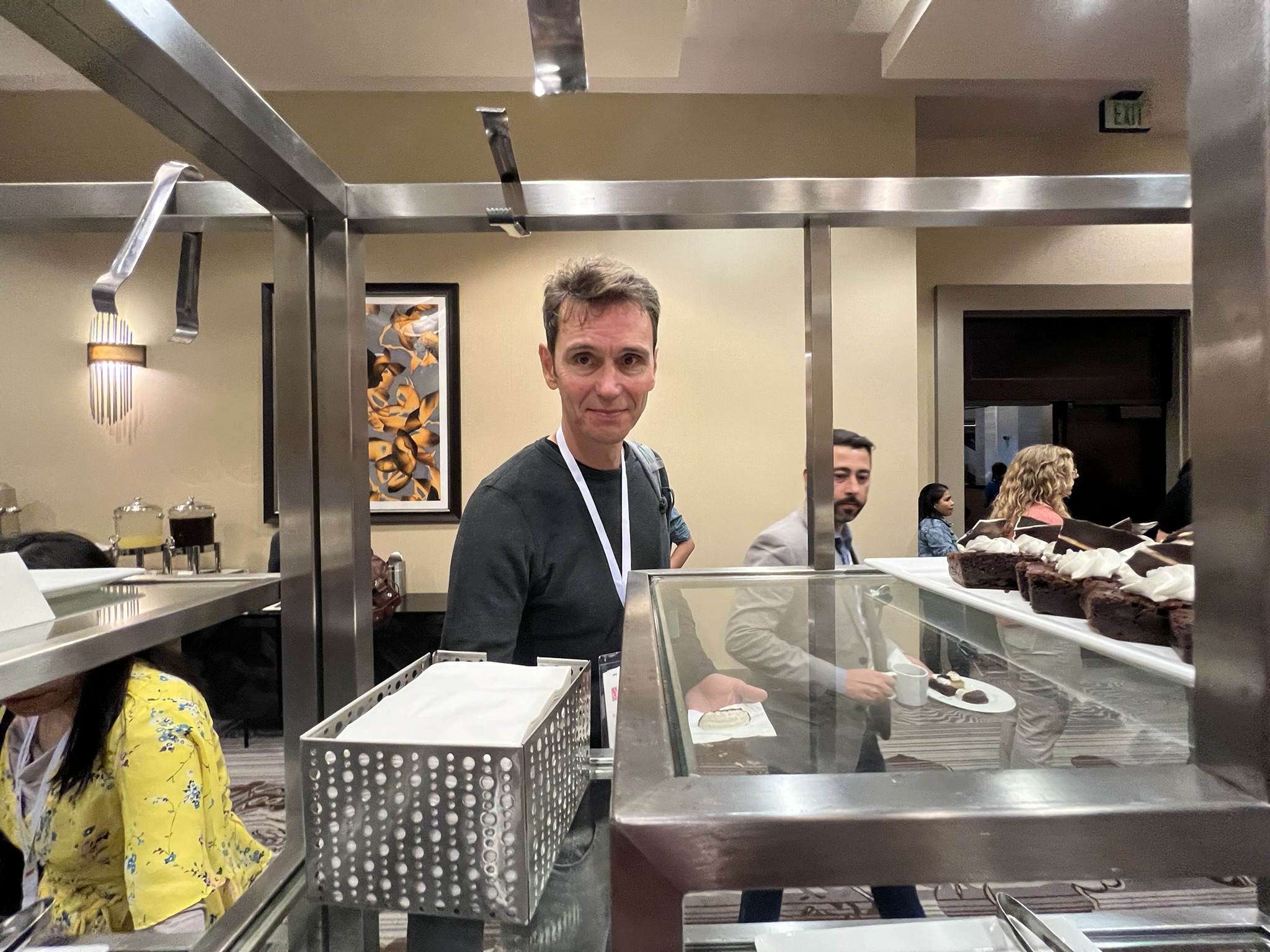 |
 |
|
Event Information
Welcome
The Skyline Team is pleased to announce this year's big event, the Annual Skyline User Group Meeting, which will be held in Anaheim, CA on Sunday afternoon before ASMS. We love seeing you all in-person -- so be sure to register and attend! We would like to thank the event sponsors (see below) for their generosity and interest in collaborating with the Skyline project on exciting new targeted and quantitative mass spectrometry techniques.
--Brendan
When: Sunday, June 2, 2024
12:00 - 1:00 pm : Lunch served
1:00 - 2:30 pm : Presentations
2:30 - 3:00 pm : Snacks and break-out discussions
3:00 - 4:30 pm : Presentations
Where: Hilton Anaheim 777 W Convention Way, Anaheim, CA 92802 (map) - Just east of the Convention Center.
[registration closed]
Sponsors
 |
|
 |
 |
 |
 |
 | |
Speakers
Here are biographies and abstracts for this year's speakers -- each users of Skyline -- scheduled to speak at the Skyline User Group Meeting at ASMS 2024 in Anaheim, CA.
Michel Batista

|
Michel Batista, Ph.D., has worked in proteomics and phosphoproteomics since 2009. Along with his lab, he's employed different techniques to study the protozoans Trypanosoma cruzi and Trypanosoma brucei. Besides, he also collaborates in studies of cancer proteomics, evaluating the profile of cancer tumors and plasma. Since 2018, he's been involved in a project aiming a proof of concept for sepsis diagnosis by LC-MS/MS. Because of this project, he started to use the Skyline platform to analyze LC-MS/MS targeted data. In addition, he's used Skyline in other projects, such as the evaluation of system complement proteins in patients infected with Leishmania and the quantification of therapeutic peptides in serum of rats after intravenous or oral administration. Since 2011, he's worked in a MS core facility in Fiocruz-Brazil, and has been manager since 2017. |
A multi-peptide mass spectrometry diagnostic approach applied to SEPSIS pathogen identification
We aimed to develop a method based on LC-MS/MS that targets specific peptides of sepsis-causing microorganisms. We described an assay to detect S. aureus, P. aeruginosa, and C. albicans directly from whole-blood samples as a diagnostic alternative for bloodstream infection. This method combines differential basic pH and acidic cell lysis, fast protein digestion, LC/ESI-MS/MS, and data analysis on Skyline. Read More[PDF]
Tanveer Batth

|
Tanveer Batth, Ph.D., obtained a doctorate in 2016 at the Novo Nordisk Foundation Center for Protein Research under the supervision of Professor Jesper V. Olsen. With over 15 years of proteomics experience and currently a researcher at the same institute, his most recent research has focused on utilizing proteomics to study fungal enzymes and novel post-translational modifications. |
Identification of a fungal N-terminal histidine methyltransferase using targeted proteomics
The fungal kingdom is a source of diverse set of novel enzymes capable of performing various biochemical reactions. Consequently, fungal enzymes have been crucial biocatalysts for industrial and research purposes. However, fungal post-translational modifications have not been extensively explored. Read More[PDF]
Emma Doud

|
Emma Doud has a multidisciplinary background in biochemistry, mass spectrometry, chemical biology, genetics, and computational / statistical data analysis, applied to a wide number of biological problems as a faculty member in the Department of Biochemistry and Molecular Biology at Indiana University School of Medicine. Her graduate work utilized a combination of genetics and small molecule mass spectrometry techniques. As a research associate at Northwestern University, she led collaborative projects focused on quantitation of histone post-translational modifications, the mechanism of small molecule inhibition of GABA-AT and bottom up and top-down global proteomics using advanced mass spectrometry methods. Since joining the Center for Proteome Analysis as Associate Director in 2019, she's optimized sample preparation workflows from diverse samples including brain, muscle, bone, cartilage, cancerous tumors, and cell lines while rapidly expanding work in proteomics bioinformatics and computational biology. She has served as the lead investigator for database-assisted de novo protein sequence analysis using the algorithm PEAKS. In 2023, she received a grant by the organization 100 Voices of Hope to support he independent research program which is focused on using enrichment techniques and mass spectrometry to understand how post-translational modifications, including acylation, oxidation, phosphorylation and glycosylation impact protein-protein interactions. She's worked closely with the Model-AD team over the last year to create a high throughput assay to quantify the biotherapeutic aducanumab in 5XFAD model mice cortex and plasma samples. This work will be presented at several conferences this summer and published soon. She's used Skyline off and on at Northwestern (targeted histone modification mass spec), in industry (Catalent - oxidation states of therapeutic monoclonal antibodies), and now back in academics in a core facility when targeted mass spectrometry is requested. |
Fit for purpose high-throughput absolute quantitation of chimeric aducanumab in mouse cortex and plasma
Although pharmacokinetics and pharmacodynamics of biotherapeutics are commonly studied through ELISAs, the extremely strong binding of modern antibody-based therapeutics can result in background, inability of secondary antibody binding, and nonlinear response curves. The selectivity and specificity of liquid chromatography-targeted mass spectrometry (LC-MS/MS) allows for absolute quantitation of chosen peptides. The Model Organism Development and Evaluation for Late-onset Alzheimer’s Disease (MODEL-AD) Consortium was established to generate, characterize, and validate the next generation of mouse models of AD and to develop a preclinical testing pipeline. As a template workflow for MODEL-AD, we have developed a high-throughput workflow for absolute quantification of chimeric aducanumab from cortex and plasma of 5XFAD mice. Read MoreA targeted MS assay for quantitation of aducanumab was designed utilizing guidelines described by the National Cancer Institute’s Clinical Proteomic Tumor Analysis Consortium (CPTAC). Proteotryptic peptides unique for chimeric aducanumab were selected, and stable isotope versions were purchased as spike in controls. A high sensitivity and high-throughput methodology was developed for increased sensitivity. Major steps that were optimized using an AssayMap Bravo (Agilent) include: automated Protein A enrichment, reduction, alkylation, trypsin digestion, and loading on to Evotips. An Evosep One LC was paired with a Lumos Tribrid Orbitrap (Thermo Fisher Scientific) for data acquisition and data were analyzed in Skyline (MacCoss lab) with a concentration curve of pure protein in matrix normalized to spike-in stable isotope labeled peptides.
Preliminary Data
The three tryptic peptides used for quantitation of aducanumab had lower limits of detection (LLOD) and quantification of 1-500 amol pure peptide on column, 2-5 ng aducanumab / µL in plasma, and 0.225 ng / µg brain homogenate. Using protein A purification of the biotherapeutic, the lower limit of quantification (LLOQ) in cortex samples was decreased by 100-fold. This assay was sensitive and linear with high reproducibility (CV 3-10% in technical replicates run on separate days) and was micronized for 96 sample formats, where a single plate could be analyzed in 48-72 hours. In the study, a balanced number of male and female 5XFAD or WT mice were dosed with daily 30 mg/kg, weekly 30 mg/kg or weekly 1 mg/kg aducanumab or weekly 30 mg/kg control IgG. A pilot cohort consisted of 37 cortex samples and 222 (37 animals with 6 timepoints) was used for workflow optimization. Following this, blinded samples including 126 cortex and 380 (2 timepoints) plasma samples were used to optimize the workflow. All data and methods will be uploaded to Panorama.
Novel Aspect
A high throughput targeted mass spectrometry workflow to be used for biotherapeutics with the MODEL-AD consortium.
[PDF]
Michael MacCoss
 |
Michael MacCoss Mike became interested in biomedical applications of mass spectrometry while working in Dr. Patrick Griffin’s protein mass spectrometry lab at Merck Research Laboratories. He obtained a Ph.D. with Professor Dwight Matthews and pursued a postdoc with Professor John R. Yates III. In 2004 he started the MacCoss lab at the University of Washington and it became obvious that while mass spectrometry data could be collected quickly and robustly, the lack of computational tools for the visualization and analysis of these data was a stumbling block. In 2008 he hired Brendan MacLean with the goal of developing professional quality software tools for quantitative proteomics. Mike has worked closely with the Skyline development team and our outstanding group of laboratory scientists and collaborators to ensure that our software uses analytical approaches that have been thoroughly vetted by the mass spectrometry community. |
Brendan MacLean
 |
Brendan MacLean worked at Microsoft for 8 years in the 1990s where he was a lead developer and development manager for the Visual C++/Developer Studio Project. Since leaving Microsoft, Brendan has been the Vice President of Engineering for Westside Corporation, Director of Engineering for BEA Systems, Inc., Sr. Software Engineer at the Fred Hutchinson Cancer Research Center, and a founding partner of LabKey Software. In this last position he was one of the key programmers responsible for the Computational Proteomics Analysis System (CPAS), made significant contributions to the development of X!Tandem and the Trans Proteomic Pipeline, and created the LabKey Enterprise Pipeline. Since that time, he has worked as a Sr. Software Engineer within the MacCoss lab and led all aspects of design, development and support in creating the Skyline Targeted Mass Spectrometry Environment and its growing worldwide user community. |
Status of the Skyline open-source software project 16 years after its inception
The Skyline project started just after ASMS 2008 as a 2-year effort to bring better SRM/MRM software tools to the NCI-CPTAC Verification Working Group that could support the variety of mass spectrometers in use in participating laboratories. Nearly 16 years later, the Skyline project is a thriving mass spectrometry community open-source collaboration supporting 6 mass spec instrument vendors, integrated with a wide variety of external software, with many thousands of users worldwide and over ten thousand instances started each week. Read More- Supporting new upstream processing pipelines
- Supporting new instrument acquisition methods
- Enhanced visualizations to better understand input data
- Growth in the Skyline software ecosystem for targeted MS (Skyline, Skyline Batch, AutoQC, Panorama, and External Tools)
- Strong industry support from instrument vendors
- Courses, workshops, webinars and other efforts to create instructional resources for the Skyline community
[PDF]
Dragana Noe
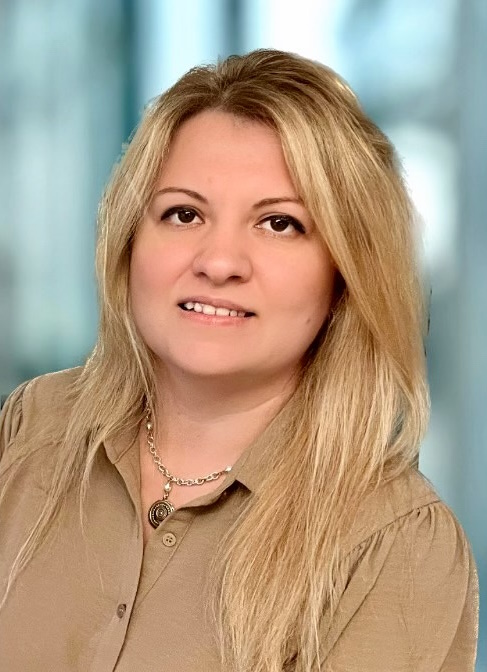
|
Dragana Noe, Ph.D. received a doctoral degree from the Institute for the Application of Nuclear Energy, INEP (Affiliated to University of Belgrade) in May 2014. With over a decade of experience in the proteomics field, Dr. Dragana Noe serves as a leader and innovator at Precision Biomarker Laboratories within Cedars-Sinai Medical Center. Specializing in targeted proteomics, Dr. Noe leads the development and application of cutting-edge mass spectrometry approaches and technologies. Her efforts aim to deepen our understanding of the world, discover new therapies, and combat life-threatening diseases. |
Comparative Analysis of Skyline and SmartPeak Performance in Quantifying a 60-Biomarker Panel in Plasma from Inflammatory Bowel Disease Patients
Accurate data analysis is pivotal in clinical proteomics for the precise quantification of plasma biomarkers, crucial in both disease detection and monitoring. The majority of targeted proteomics research relies on open-source software, such as Skyline and SmartPeak. Read More[PDF]
Mike Riffle

|
Mike Riffle has many years of experience in bioinformatics, data science, and statistics; and has worked with several leading academic proteomics laboratories in the US. He is a proponent of open and reproducible science, and has produced several open source tools for proteomics data visualization, including Proxl (protein cross-linking) and, more recently, Limelight (generalized proteomics data visualization and sharing). Michael has a Bachelors in Molecular and Cellular Biology from the University of Washington and his Masters in Computer Science from the University of Illinois Urbana-Champaign. |
From RAW to Skyline: an automated DIA data analysis workflow written in Nextflow that emphasizes ease of use, data reproducibility, and open science.
An automated computational workflow can solve many problems in data analysis. It dramatically simplifies installing and running the constituent steps, manages versions, reduces user errors, provides data provenance, and is essential for data reproducibility. Read More[PDF]
Lauren Royer

|
Lauren Royer received her P.S.M. from Temple University studying Bioinnovation and Bioinformatics after completing her B.S. in biology at Penn State University. She is an informatics scientist at MOBILion Systems who leverages Skyline’s flexible proteomics and small molecule tools to develop workflows and analyze data across various applications. She has presented and contributed to multiple conference presentations on mobility aligned fragmentation and ion mobility data analysis and guides the development and validation of MOBILion’s ever-growing list of informatics workflows. |
Leveraging CCS and Mobility Aligned Fragmentation for Ion Mobility Enhanced Analysis of Lipids
Lipidomics analysis often requires MS/MS analysis for confident identification, but fragmentation alone is often insufficient for differentiating various isomeric species. This is especially true when chromatographic separation is lacking. Skyline’s ion mobility filtering workflow provides an excellent tool to detect and monitor high resolution ion mobility (HRIM) separated lipid isomers by extracting fragmentation spectra based on the lipid’s measured collision cross section (CCS). Read More[PDF]
Amie M. Solosky

|
Amie M. Solosky completed her B.S. in Chemistry in 2019 at The College of Saint Rose in Albany, NY. In 2020, she began her work in analytical chemistry at the New York State Department of Health. Here, she routinely ran GC-MS methods and developed LC-MS biomonitoring methods. Currently, she is an analytical chemistry Ph.D. candidate at the University of North Carolina at Chapel Hill in Prof. Erin Baker’s laboratory. Her research focuses on optimizing lipid analyses for more sensitive studies and applying the measurements to answer research questions involving marine animals including California sea lions and various species of sharks. Amie also utilizes multiple separation types (e.g., GC, LC, IMS, etc) and various mass spectrometry platforms to dive into her research questions. Furthermore, she can code and apply Skyline software to expedite her studies. |
Developing and Applying a Multidimensional Lipid Database Containing Liquid Chromatography, Ion Mobility Spectrometry, and Mass Spectrometry Separation Characteristics in Skyline
Lipids are critical for biological function in the body as they are responsible for cell membrane structure, cell signaling, lipid biosynthesis, and energy storage. Additionally, lipid dysregulation has been observed in disorders such as cancer, Alzheimer’s disease, and diabetes and has been closely linked to different environmental exposures. These functional and disease associations have motivated researchers to evaluate lipidomic changes in numerous matrices. Read More[PDF]
Will Thompson

|
Will Thompson, Ph.D. its currently Principal Scientist in Research and Development at 908 Devices Inc, and an Adjunct Assistant Research Professor at Duke University. Prior to his current role at 908 Devices, Will spent 15 years in the Duke Proteomics and Metabolomics Shared Resource, where his team established the metabolomics arm of the core starting in 2013. Will has been an active Skyline user, zealot, and requester-of-features since 2009. |
Enhancing Skyline for MicroChip CE-HRMS Metabolomics with a Novel Software Pipeline Including Automated System Suitability Testing, Data QC, and Metabolite Peak Quantification
IntroductionMetabolomics has demonstrated the ability to measure hundreds of metabolites in diverse sample types. Nonetheless, data analysis remains a key bottleneck in targeted and nontargeted approaches. For example, although system suitability testing (SST) has been widely adopted as common practice in metabolomics, human intervention is often required to accept or reject system suitability, without strict go/no go criteria. After experiments have been run, data quality assessment is typically performed manually and many hours after experiment completion, resulting in time wasted if a sample needs to be reanalyzed. Finally, errors in metabolite/peak assignment require arduous manual curation. We have developed a novel Windows application which automates instrument orchestration, SST interrogation, raw data QC, and the quantitative pipeline for ZipChip CE-MS metabolomics.
Read More
Amino acid standards (Promega) were diluted in Peptides Diluent (908 Devices) and utilized as a system suitability standard (SST) for ZipChip CE-MS analysis on an Exploris 240 (Thermo). Pass/Fail criteria were developed using historical criteria from hundreds of analyses, and included migration time, peak shape (resolution), and migration index. Samples including plasma, serum, and urine (BioIVT) were extracted using a simple methanolic protein precipitation including 36 stable isotope labeled internal standards and ammonium acetate. Open source application was developed in Python with standard data science toolset (e.g. pandas, numpy). The application utilizes Skyline tempas a backend for data extraction and for steps of the quantitation pipeline.
Preliminary Data
We determined that a set of 5 metabolites in a Skyline template was sufficient to detect system failures nearly perfectly in CE-MS. Using a set of several hundred analyses across multiple chips, we established pass/fail criteria for the following metrics in SST: 1) migration time of lysine (highest mobility), 2) migration time of aspartic acid (lowest mobility), 3) separation resolution of isoleucine and leucine, and 4) migration of valine compared to Ile/Leu. These metrics were then incorporated into a GUI which provides users immediate feedback at system startup, with guided procedures for next steps if the SST fails.
To automatically detect system/analysis failures during a batch, we screened 36 internal standards and identified 4 measurements that could detect in an automated manner whether the sample was injected properly, if the sample was prepared correctly, and whether the separation quality was acceptable. Using several hundred runs to build acceptance criteria from a variety of sample types (serum, plasma, urine) we utilized a Skyline template against four internal standards to determine key failure modes with nearly 100% accuracy, allowing automated resubmission or exclusion from data analysis as required.
Finally, we utilize the iRT calculator approach to index migration time (iMT) for a set of 325 metabolites, and store this iMT library for subsequent annotation of peaks. We demonstrate that despite accurate time predictions, current peak picking algorithms (including in Skyline) mis-assign peaks nearly 100% of the time when a higher intensity, isobaric peak exists nearby in time. We highlight that this is because current peak assignment models for each metabolite do not typically have 'knowledge' of elution order for isobaric species; because of the high similarity between metabolites with similar structures, near co-elution is common. We utilize the Hungarian algorithm for multi-assignment problem, along with the relative positions of compounds in the iMT library, to build a peak re-assignment method which removes double-assignments and can accurately select the correct lower intensity isobaric species. This drastically improves automated peak assignment and decreases manual curation time.
[PDF]
Fengchao Yu

|
Fengchao Yu Ph.D, is a research faculty member of the Alexey Nesvizhskii group at the University of Michigan. Fengchao received his Ph.D. degree from the Hong Kong University of Science and Technology. He is currently the leading developer and maintainer of several proteomics data analysis tools including FragPipe, MSFragger, and IonQuant. |
Integration of Skyline into FragPipe for Streamlined Visualization
Data visualization is an essential process in proteomics for assessing the quality of data and interpreting results. Skyline is a leader in this area, particularly for targeted and DIA methods. Here we present integration of Skyline with FragPipe, a comprehensive DDA and DIA proteomics data analysis pipeline, for visualizing and assessing FragPipe results. Read More[PDF]
Yiying Zhu

|
Yiying Zhu, Ph.D. received her doctoral degree from Brown University and completed her post-doctoral training at the Forsyth Institute (Harvard School of Dental Medicine). She worked at Cell Signaling Technology Inc. (MA, USA) as a senior scientist until joining Tsinghua University (Beijing, China) as a core facility director. Her primary research input is on developing methods for the characterization of protein post-translational modifications (PTMs) using LC-MS/MS. As part of her doctoral projects, she participated in a worldwide interlaboratory study on the characterization of PSA glycosylation. While working at Cell Signaling Technology, she developed immunoaffinity enrichment tools and LC-MS/MS methods for mapping various PTMs. Skyline has been an amazing tool for analyzing protein PTMs, and she has been using it for nearly a decade. |
In-silico methods for distinguishing the glycan structural isomers by the isotope substitution
Analysis of glycopeptides using LC-MS/MS is a challenging task mainly due to the complexity of glycans. Recent developments in searching algorithms have made it possible to identify glycopeptides on a large scale. The pGlyco software can determine the glycan structure isomers by their differential fragmentation in MS/MS spectra. Read More[PDF]